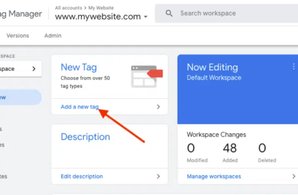Top 21 Actionable / Proven Tactics to Improve Google Rankings in 2026
- Home
- Knowledge Sharing
- Top 21 Actionable / Proven Tactics to Improve Google Rankings in 2026
Search engine optimization is entering a new era in 2026 — one that rewards substance, speed, and trust over shortcuts. Over the past two years, Google has reshaped its ranking systems: the Helpful Content Update has been folded into the core algorithm; Core Web Vitals now measure responsiveness with Interaction to Next Paint (INP); and AI Overviews have become a fixture in results. At the same time, new spam policies make it clear that scaled AI fluff, irrelevant domain takeovers, and low-quality third-party publishing won’t fly.
For brands and marketers, the path forward is simple but demanding: demonstrate expertise, deliver fast and stable user experiences, and keep a clean compliance record. This guide distils 21 practical tactics aligned with Google’s latest requirements — designed to help Canadian companies and global brands future-proof organic visibility in a competitive landscape.
Content & E-E-A-T — Building Helpful, Experience-Driven Content
By 2026, content quality is under a microscope. With the Helpful Content Update now baked into Google’s core systems and the ongoing emphasis on E-E-A-T (Experience, Expertise, Authoritativeness, Trustworthiness), pages can’t be filler. They must solve tasks fully, show first-hand experience, and remain current.
Rewrite for “Helpful” Content Standards
Most pages fail not because they’re wrong, but because they’re incomplete. Move beyond definitions and give readers the tools to act.
What to do
- Open with a direct answer to the core question.
- Add comparisons (tables, pros/cons) and decision frameworks (“Best for / Not for / Alternatives”).
- Include disclaimers about when your product/service is not a fit.
- Link to primary or highly credible sources.
- Run an internal Search Essentials check before publishing.
Mini-case (E-commerce)
A furniture retailer replaced generic “sofa size guides” with a decision framework + comparison table (apartment vs. detached home, fabric vs. leather, CAD price tiers). CTR rose 18% and return-to-SERP dropped 12%.
Lead with Experience (the extra “E”)
Google is rewarding lived experience. Prove that a qualified person did the work.
Show, don’t tell
- Add case studies: client, challenge, approach, outcome.
- Use original photos/videos of your team performing the task or testing products.
- Display an author box with credentials and a reviewed by line for sensitive topics.
- Publish an Editorial Policy explaining research, fact-checking, and updates.
Industry note (Medical/YMYL)
For health, finance, and legal content, include
clinician or credentialled expert review
, citations to primary studies or regulators, date of last update, and clear risk/limitation statements. This isn’t just about rankings — it's about user safety and trust.
Audit for Scaled AI Content Abuse
AI is part of modern editorial workflows, but scaled, generic outputs are risky. Google is explicit: volume isn’t value.
Five-step audit
- Export all URLs; flag AI-assisted pages.
- Score each piece for usefulness and uniqueness (High/Medium/Low).
- Merge overlaps; prune thin or duplicative posts; redirect where appropriate.
- Add human insights (tests, examples, Canadian market context) and fact-check claims.
- Disclose AI assistance where relevant; maintain an AI use policy.
Red flags
Recycled intros/outros, advice with no sources, zero visuals, no first-hand details.
Use Content Hubs and Topic Clusters
Complex search intent spans multiple sub-questions. Structure your site so users (and crawlers) can explore logically.
Blueprint
- Pillar page: comprehensive overview, FAQs, buyer’s guide.
- Cluster pages: deep dives (comparisons, troubleshooting, pricing).
- Support assets: calculators, checklists, video walk-throughs.
- Internal linking: 2–4 contextual links per page + breadcrumbs.
Tools . Each links back to the pillar and across to siblings; FAQs point to the specific deep dives.
Commit to Ongoing Content Gardening
Content decays. Treat your library like a garden: refresh, merge, prune.
Cadence
- Monthly: refresh stats/visuals on top-traffic posts.
- Quarterly: consolidate cannibalising pages; prune thin or outdated content.
- Bi-annual: full accuracy review of data, screenshots, and compliance notes.
KPIs
% of pages updated in 12 months; # merged/redirected pages; thin-content ratio trending down; time on page and scroll depth trending up.

Technical SEO & User Experience
Technical seo foundations and real-user speed now directly shape visibility. INP has replaced FID; LCP and CLS remain vital. Structured data, clear architecture, and efficient crawling decide how much of your great content is discovered.
Optimize for INP (Interaction to Next Paint)
INP measures the time from user input to the next visual update. Aim for ≤ 300 ms at the 75th percentile.
Actions
- Remove or defer non-critical JavaScript; adopt code-splitting.
- Break up long tasks (>50 ms); profile the main thread.
- Optimise event handlers; debounce/throttle where appropriate.
- Preload critical CSS and essential fonts (font-display: swap).
Where to start
Tackle heavyweight interactions: checkout, forms, filters, search. These are both UX bottlenecks and revenue drivers.
Keep LCP & CLS in the Green
- LCP target : < 2.5 s (75th percentile).
- CLS target : < 0.10 (75th percentile).
Improve LCP
- Preload the hero image and critical CSS.
- Serve WebP/AVIF with responsive srcset.
- Reduce render-blocking scripts; use a CDN.
Reduce CLS
- Reserve width/height for images/embeds/ads.
- Avoid layout-shifting banners or intrusive pop-ups.
- Use font swapping to prevent late reflows.
Structured Data by Default
Schema markup is no longer optional — it powers rich features and improves machine understanding for AI Overviews.
Implement JSON-LD templates
for: Organization, Product, Article, FAQ, HowTo, Review, LocalBusiness.
Auto-populate author, dates, and identifiers (SKU/GTIN); validate in CI/CD; monitor Google Search Console for errors.
Publisher win
Article + FAQ schema increases your chances for snippets and better attribution in AI surfaces.
Clear Information Architecture & Sitemaps
Even the best content can fail if buried. Use clean, hierarchical URLs; add breadcrumbs; maintain both XML and HTML sitemaps; avoid orphan pages with regular crawl checks.
Mini SOP
- New category → add to sitemap → link it from at least two relevant hubs.
- Insert related-content blocks (2–4 links) in templates to strengthen clusters.
Crawl Budget Optimization
On large or complex sites, crawl waste kills indexation.
Five steps
- Log-file analysis (quarterly): top directories, 200/301/404 ratios, and crawl frequency.
- Map parameters/filters; block junk with robots.txt, nofollow, or canonicals.
- Consolidate duplicates with canonicals, hreflang, or 301s.
- Prioritise “money” pages in sitemaps and internal links.
- Re-test crawl and track indexation after 2–4 weeks.
Mini-case (E-commerce, 100,000+ SKUs)
Faceted navigation produced millions of thin URLs. The team audited parameters, blocked non-value combinations, added canonical rules, and re-weighted internal links to top categories. Result: 37% more crawl hits on revenue pages and 22% faster indexation of new SKUs.

Spam Compliance & Risk Management
Google’s stance on spam has tightened sharply since 2024. Site reputation abuse, scaled content abuse, and expired domain abuse are priority targets. Compliance isn’t a nice-to-have; it’s a ranking moat. This section adds practical examples, a step-by-step audit, and protection measures you can implement today.
Avoid Site Reputation Abuse
Site reputation abuse (often called “parasite SEO”) happens when third-party content is published on a trusted domain but is misaligned with that site’s purpose or lacks editorial oversight.
How it looks in the wild (anonymised)
- A regional news outlet hosts dozens of casino/loan affiliate pages produced by third parties with minimal oversight.
- A niche education portal starts publishing CBD product roundups authored off-site and labelled as “partners’ posts”.
- A respected tech blog sells subdomains to coupon sites; pages masquerade as guides but are thin listicles with affiliate links.
Why it’s risky
Google sees this as misusing a high-trust domain to rank unrelated or low-quality content. The host site can be demoted or have sections deindexed.
Protect your domain
- Enforce topical alignment for all third-party contributions.
- Use editorial review and fact-checking before publication.
- Apply rel="sponsored" for paid placements and rel="ugc" for community posts.
- Disclose relationships clearly (sponsored, partner, affiliate).
- Maintain a public policy for guest posts and partnerships.
Handle Expired Domains Carefully
Expired domain abuse involves acquiring a domain with historical authority and repurposing it for unrelated content.
Real-world patterns (anonymised)
- A defunct environmental NGO domain is bought and turned into a crypto exchange blog.
- A shuttered local festival site is repurposed for adult content.
- A lapsed home-improvement brand suddenly redirects to gambling offers.
When it’s acceptable
Use is aligned with the original purpose: e.g., a brewery acquiring a former beer festival domain, preserving relevant archives, and redirecting to a topical hub.
Safe migration
- Document topical continuity (wayback snapshots, legacy categories).
- Preserve relevant content or create contextual redirects (not blanket).
- Publish a transparency note about the transition.
Strengthen Trust Signals Site-Wide
Trust is an outcome of transparency and consistency.
Non-negotiables
- Clear About, Contact, Editorial Policy, and Corrections pages.
- Author boxes with credentials; “Reviewed by…” lines for YMYL.
- Updated dates on all articles; visible change logs for major updates.
- Citations to primary sources (regulators, standards bodies, peer-reviewed research).
- Sitewide security (HTTPS), clear privacy policy, and accessible contact options.
Spam Audit: A Step-by-Step Guide
Use this self-assessment to identify risk before Google does.
- Inventory third-party content: guest posts, sponsored posts, partner pages, subdomains, community areas.
- Test for topical alignment: Does each page fit the site’s mandate? If not, remove, revise, or noindex.
- Check link attributes: Paid or partner links should use rel="sponsored"; community links should use rel="ugc".
- Verify editorial controls: Who approves third-party content? Is there fact-checking and source review?
- Scan for scaled AI: Look for templated language, repetitive structures, and thin advice. Prune or rewrite.
- Evaluate expired domains: If you’ve acquired any, document continuity and ensure redirects are contextual.
- Review adverts/affiliates: Ensure disclosures are visible and ads don’t impede UX (pop-ups, CLS issues).
- Check forum/UGC moderation: Are spam filters and human moderation in place? Are user links correctly tagged?
- Monitor in Search Console: Watch for manual actions, crawling anomalies, or sudden visibility shifts.
- Create a remediation plan: Remove the worst offenders first, apply correct rel-attributes, and publish policies.
Proactive defences
- Contracts: Specify topical boundaries, disclosure, and link attributes for sponsors/partners.
- CMS controls: Default link attributes for sponsored and UGC areas; moderation queues; link caps.
- Periodic reviews: Quarterly audits of third-party content and UGC; re-authentication of partners.
Mini-case (Publisher)
A lifestyle magazine audited 600+ legacy “partner” posts. They removed 120 off-topic articles, re-tagged paid links, and added an editorial policy. Organic traffic dipped briefly, then recovered with better engagement and more stable rankings.
Links & Entity Signals
Backlinks still matter, but the bar has risen. Google is valuing editorially earned mentions and consistent entity signals across the web more than raw link counts.
Focus on Digital PR, Not Link Farms
Mass link buying is a liability. Earn mentions that publications are proud to host.
How to earn links that move the needle
- Commission original research or Canadian market surveys.
- Launch data tools or calculators in your niche.
- Pitch expert commentary to journalists (seasonal trend coverage works well).
- Collaborate with universities/associations for studies or events.
Quality test
Would a reputable editor publish this if no link was offered? If not, rethink the asset.
Build Consistent Entity Signals Across the Web
Your entity is your digital identity. Consistency builds machine trust.
Actions
- Align NAP (Name, Address, Phone) across your site, Google Business Profile, directories, and social profiles.
- Keep Wikidata/Wikipedia (if applicable) aligned with how your organisation is described elsewhere.
- Reinforce topical categories uniformly (e.g., a craft brewery should reflect brewing/hospitality — not random verticals).
- Use structured data (Organization/LocalBusiness) to tie on-site facts to off-site profiles.
Mini-case (Local business)
A Toronto dental clinic standardised NAP across GBP, the clinic website, provincial directories, and community forums. With consistent categories, updated hours, and LocalBusiness schema, map pack visibility rose, and calls from discovery searches increased 28%.
Competitor Analysis & Benchmarking
Google’s ranking systems don’t operate in a vacuum — your performance is always relative to competitors. By 2026, the difference between ranking in the top three or dropping off page one often comes down to whether you’ve benchmarked effectively. Competitor analysis is not about copying; it’s about understanding strengths, spotting weaknesses, and identifying gaps you can fill with better, more trustworthy experiences.
Analyse Competitors’ Content Hubs & E-E-A-T
Most industries now have well-developed content hubs. To stay ahead, you need to evaluate how competitors structure theirs.
Checklist for content analysis
- Map competitors’ pillar + cluster models. Which hubs dominate?
- Review completeness: Do they answer full user intent, or leave gaps you could fill?
- Evaluate E-E-A-T signals: Are there expert bios, citations, or first-hand visuals?
- Benchmark content freshness: How often do they update stats, images, and recommendations?
Opportunity lens : If a competitor hub is comprehensive but thin on lived experience (no real-world photos, no case studies), that’s your chance to stand out.
Benchmark Technical SEO & UX
Core Web Vitals are measurable across domains. Poor INP, LCP, or CLS gives you a technical wedge to outperform competitors.
Tools to use
- Chrome User Experience Report (CrUX) for real-user data.
- PageSpeed Insights + Lighthouse for lab tests.
- Crawl competitors with Screaming Frog or Sitebulb to see IA, sitemaps, and internal linking.
Benchmarking questions
- Are competitors meeting INP ≤ 300 ms?
- Which page types (product, blog, category) are slowest?
- How deep is their content buried? How many clicks from the homepage?
Case : A Canadian retailer saw that its main competitor had weak CLS (pop-up banners caused layout shifts). By streamlining its own banners and preloading images, the retailer outperformed on Core Web Vitals and won back top-3 rankings for seasonal queries.
Investigate Backlink & Digital PR Strategies
Backlinks are still a major ranking driver, but the bar is higher. You need to see where competitors are earning coverage.
How to analyse
- Use tools like Ahrefs, SEMrush, or Majestic to extract top referring domains.
- Categorise links: editorial, PR, directories, affiliates.
- Spot content that earns coverage (e.g., surveys, research, calculators).
- Compare authority distribution: Are they winning links from universities, news, or associations?
Opportunity lens
If a competitor dominates with research-based PR, think about whether you can create Canadian market-specific reports or niche tools to capture the same attention.
Turn Insights Into Action
Competitor analysis isn’t useful unless it feeds strategy. Create a gap-to-win framework:
| Dimension | Competitor Strength | Your Opportunity |
|---|---|---|
| Content hubs | Covers topics A–C, but no case studies | Add lived experience & expert voices |
| E-E-A-T signals | Author bios, but no editorial policy | Publish policy + expert reviewer credits |
| Technical SEO | Strong LCP, weak CLS (banner shifts) | Optimise CLS + highlight UX in PR |
| Links/PR | Strong in global media, weak locally | Target Canadian trade press + chambers of commerce |
This framework keeps teams focused on playing offence, not just reacting.
With competitor analysis embedded in your workflow, you can position your site as the best alternative — not only for users but also in Google’s comparative lens. The result: steadier rankings, stronger authority, and defensible market share.

AI Overviews & Generative Search
AI Overviews provide summarised, multi-facet answers. They can drive visibility, but they can also reduce clicks if your page doesn’t give searchers a reason to visit. The key is to be extractable and click-worthy.
Structure Content for AI Overviews
Make it easy for algorithms (and humans) to parse.
AI-ready page blueprint
- Top: concise answer + a “Quick facts” table.
- Middle: comparison blocks, step-by-step instructions, pros/cons.
- Bottom: FAQs and a clear CTA to the full guide, calculator, or case studies.
Writing tips
- Use descriptive H2/H3 headings and short paragraphs.
- Front-load the direct answer; then elaborate with context and examples.
- Cover purchase considerations: price, features, risks, alternatives.
Leverage Schema for Extractability
Use schema to make intent explicit.
Defaults by template
- FAQPage for common questions
- HowTo for step-by-steps
- Product for specs/pricing/availability
- Review/Rating for testimonials
- LocalBusiness for address, hours, service area
Even when schema doesn’t guarantee inclusion in AI Overviews, it improves machine readability and attribution.
Target “Complex Commercial Queries”
AI Overviews tend to appear on decision-heavy queries. Build content that addresses the full decision journey.
Pattern
- Define the problem and who it’s for.
- Provide comparison tables and alternatives.
- Offer a selection framework (steps, criteria).
- Add disclaimers on limits/risks.
- Finish with a CTA to deeper content or tools.
Mini-case (B2B equipment)
A manufacturer’s “How to choose a fire suppression system for battery storage” guide combined definitions, a risk matrix, a comparison table, and a calculator. The page began receiving AI Overview citations within a month and drove qualified demo requests.
UGC, Forums & Reviews
User-generated content signals real experience and keeps sites fresh. Reviews are among the strongest trust indicators across local, product, and service searches.
Build a UGC/Community Strategy
Authentic discussions create value that’s hard to fake.
Practical steps
- Add a forum or Q&A section with clear guidelines.
- Moderate with a mix of automation and human review.
- Mark up threads with DiscussionForumPosting schema.
- Track performance in Search Console’s forum-related filters.
Why it works
Forums generate long-tail coverage, diverse phrasing, and timely anecdotes that searchers value — especially for troubleshooting and niche topics.
Reviews as a Quality Signal
Make it easy (and ethical) for customers to leave feedback.
Systemise reviews
- Provide direct review links post-purchase; add QR codes in physical locations.
- Respond to all reviews — positive and negative — within a reasonable timeframe.
- Add Review/Rating schema on product and local pages.
- Watch for policy compliance; never incentivise fake or misleading reviews.
Outcome
Review velocity, response time, and average rating (aim for
4.5+
) strongly influence click-through and conversions, especially in local packs and product SERPs.
Operational SEO in 2026
Static strategies won’t keep up with algorithm changes, AI surfaces, and policy updates. Treat SEO as an operating system for your website.
Adopt the Observe → Ship → Prune Cycle
Observe
Use Search Console to track impressions, clicks, surfaces (AI Overviews, Discover), and query shifts. Combine with real-user Core Web Vitals (INP/LCP/CLS) and log-file insights for crawl behaviour. Watch SERP features for priority queries and note competitor moves.
Ship
Deploy improvements steadily: a new cluster answering an emerging question; default schema templates; INP fixes; a review-collection prompt. Smaller, frequent releases create a feedback loop — learn quickly, and keep risk low.
Prune
Remove what no longer serves users. Merge overlapping posts; redirect duplicates; delete unrecoverable thin content. Clear out unused plugins and heavy scripts. Pruning focuses crawl equity on what matters and protects against scaled content abuse.
Cadence
- Weekly: Core Web Vitals checks, minor fixes.
- Monthly: one cluster shipped; PR outreach; reviews tune-up.
- Quarterly: log-file seo audit , crawl clean-up, content consolidation.
90-Day Plan (Actionable Roadmap)
| Timeframe | Focus | Outcome | KPI |
|---|---|---|---|
| Weeks 1–2 | INP/LCP/CLS audit; schema defaults live | Technical baseline achieved | INP ≤ 300 ms (75p); ≥ 80% pages with valid schema |
| Weeks 3–6 | Launch Topic Cluster #1 + Digital PR asset | Topical authority + earned mentions | Cluster traffic; 3–5 editorial links DR 50+ |
| Weeks 7–10 | UGC pilot + Reviews v2 | Community signals + higher CTR | Forum threads/week; reviews/month; avg rating ≥ 4.5 |
| Weeks 11–12 | Spam audit + remediation | Risk reduced; trust signals strengthened | Zero off-topic third-party pages; rel-attributes correct |
Industry-Specific Playbooks (Quick Hits)
E-commerce (Crawl Budget for 100k+ SKUs)
- Block non-value parameter combos; canonicalise variants.
- Reduce thin “colour/size” pages; use faceted controls server-side.
- Auto-generate Product schema with price, availability, and GTIN.
- Prioritise crawl to top categories and new arrivals; update XML sitemaps daily.
Medical (YMYL) — Show Experience & Expertise
- Clinician-reviewed content with credentials and date.
- Transparent sources: clinical guidelines, peer-reviewed studies, Health Canada.
- Clear risk/benefit statements; “when not to use” sections.
- Feedback loop for corrections; visible editorial policy.
Local Business — Consistent Entity Signals (NAP)
- Standardise NAP across Google Business Profile, website, directories.
- Keep hours, services, and categories aligned; use LocalBusiness schema.
- Encourage local reviews; respond promptly.
- Engage in community forums/groups to seed authentic discussion.
Conclusion
Improving Google rankings in 2026 isn’t about chasing loopholes. It’s about delivering the best answer with the best experience, and proving that you operate with integrity. Focus on helpful, experience-rich content, hit Core Web Vitals targets, implement structured data by default, and take spam compliance seriously. Earn real mentions through digital PR, keep your entity signals consistent, and build community and reviews that reflect customer reality. Finally, run the Observe → Ship → Prune cycle to stay adaptive.
Follow these 21 tactics and you’ll have a durable, compounding advantage — one that holds up as search continues to evolve.




